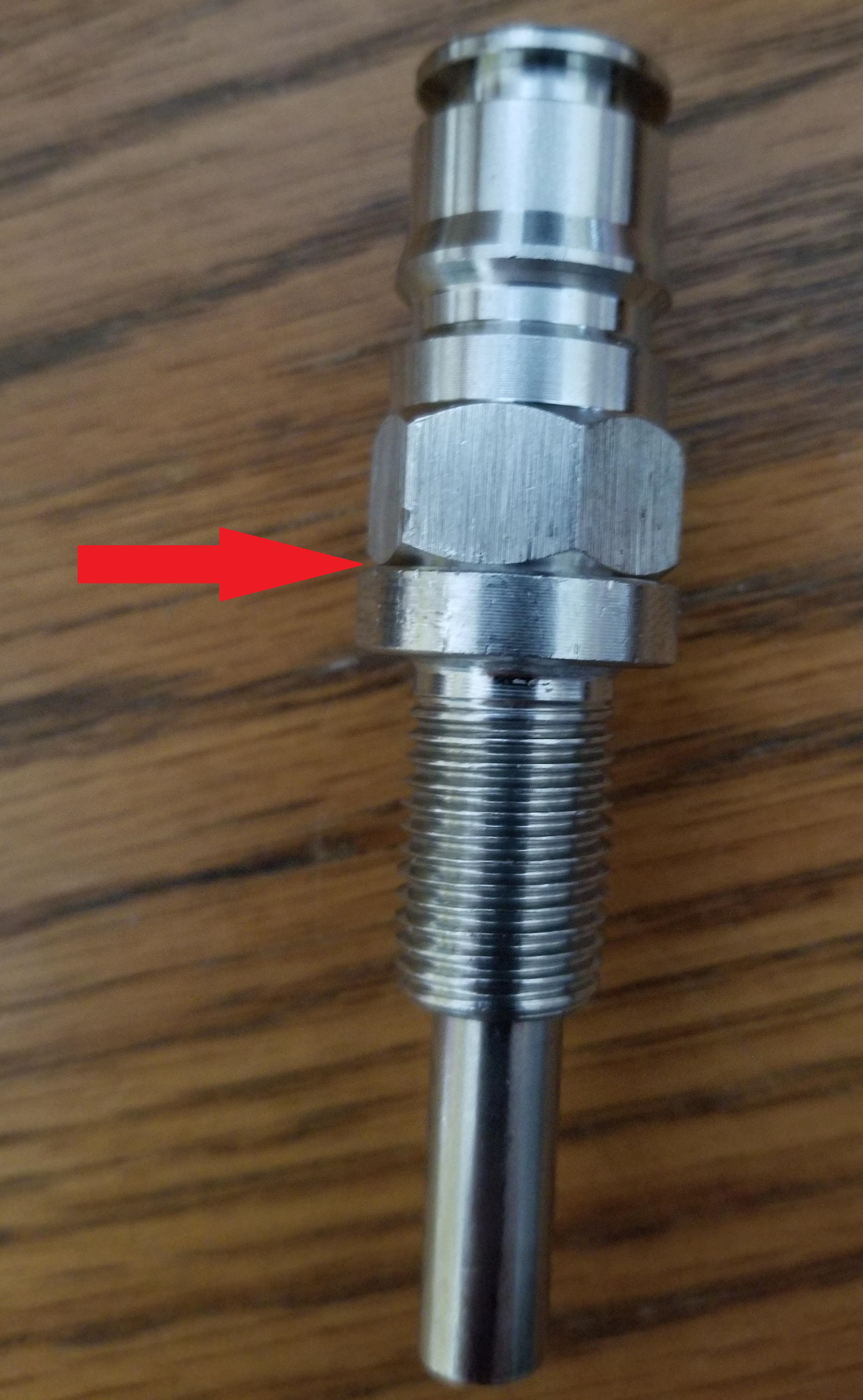Dgallo
Instagram: bantam_brews
Between 7/16 - 1/2”. 7/16” is tight but will workDoes anyone know the size hole to drill in the lid?

Between 7/16 - 1/2”. 7/16” is tight but will workDoes anyone know the size hole to drill in the lid?
Edit: Revised parts list, does this look like everything needed? It comes out to a bit over $100, plus shipping.
https://www.morebeer.com/view_product/38734https://www.morebeer.com/view_product/37921https://www.morebeer.com/view_product/50266https://www.morebeer.com/view_product/502652 x
https://www.morebeer.com/view_product/39278https://www.morebeer.com/view_product/485065 ft 3/16 liquid line
















I noticed something similar with the o-rings that come with these fittings. When attached to the Fermonster lid, you need to hit the sweet spot with tightness or else the o-ring will flatten/bulge out of the side, likely killing the seal. I am going to try to find better o-rings.
Correct, I did specify I noticed a similar issue at a different seal point.I think you are talking about the o-ring/gasket that seals the bulkhead against the lid. I was talking about dip tube o-rings. Different failure mode.
That said, when I first bought my parts, I didn't like the way the bulkhead o-rings/gaskets fit. After a little experimentation, I settled on #204 Buna rings, which I put between the bulkhead and the lid and also between the nut and the underside of the lid.

View attachment 769841
Got mine set up and just ordered a second one! Do you guys take the bulkheads off each time to clean or leave in place?
Can you link to the gaskets you are looking at? My bulkheads are less than 100% hand tight. If I twisted as hard as I could, like you said, the rubber seal would pop out from under the fitting. I have not actually sprayed the connections to test for leaks yet, but I will at the end when I go to transfer. However, the airlock is working just fine.Mine keep losing their seal, I think I'm going to try vinyl gaskets as the included rubber ones just get smushed and don't seal.
Can you link to the gaskets you are looking at? My bulkheads are less than 100% hand tight. If I twisted as hard as I could, like you said, the rubber seal would pop out from under the fitting.
Air lock does work fine, but I do closed transfer and it breaks the seal under pressure.
VikeMan, have a link to ones that work?
I open mine the same as you. Your ballock connect should be able to rotate some while connected without spinning the bulkhead post.I run into a small issue with this setup and I'm curious if anyone else has. When I got to dry hop, I attach the gas disconnect, start to open the lid, turn the gas on once gas can escape, keep spinning the lid until its open and toss the hops in. My issue is that by spinning the lid with the disconnect attached, the bolt underneath the lid tends to unscrew a bit. Obviously I want everything kept super tight for a smooth transfer on kegging day. Anyone opening their lid for dry hopping differently?
I open mine the same as you. Your ballock connect should be able to rotate some while connected without spinning the bulkhead post.
are you pushing a gas ballock onto a liquid post? The co2 balllocks are slightly smaller and could cause that.
I am having trouble with leaks around my o rings as well - not sure what else I can do, I’ve got a good looking o rings on the inside and outside of the lid, still leaks at just a few PSI.
It might sound counter intuitive but, is there a chance you over-tightened? Easy mistake to make, but tightening much more than hand-tight causes the o-ring to bind in one point and lift in another causing leaks. Usually, just one o-ring on the inside is enough.I am having trouble with leaks around my o rings as well - not sure what else I can do, I’ve got a good looking o rings on the inside and outside of the lid, still leaks at just a few PSI.
Oh. Yeah. I was using a wrench….It might sound counter intuitive but, is there a chance you over-tightened? Easy mistake to make, but tightening much more than hand-tight causes the o-ring to bind in one point and lift in another causing leaks. Usually, just one o-ring on the inside is enough.